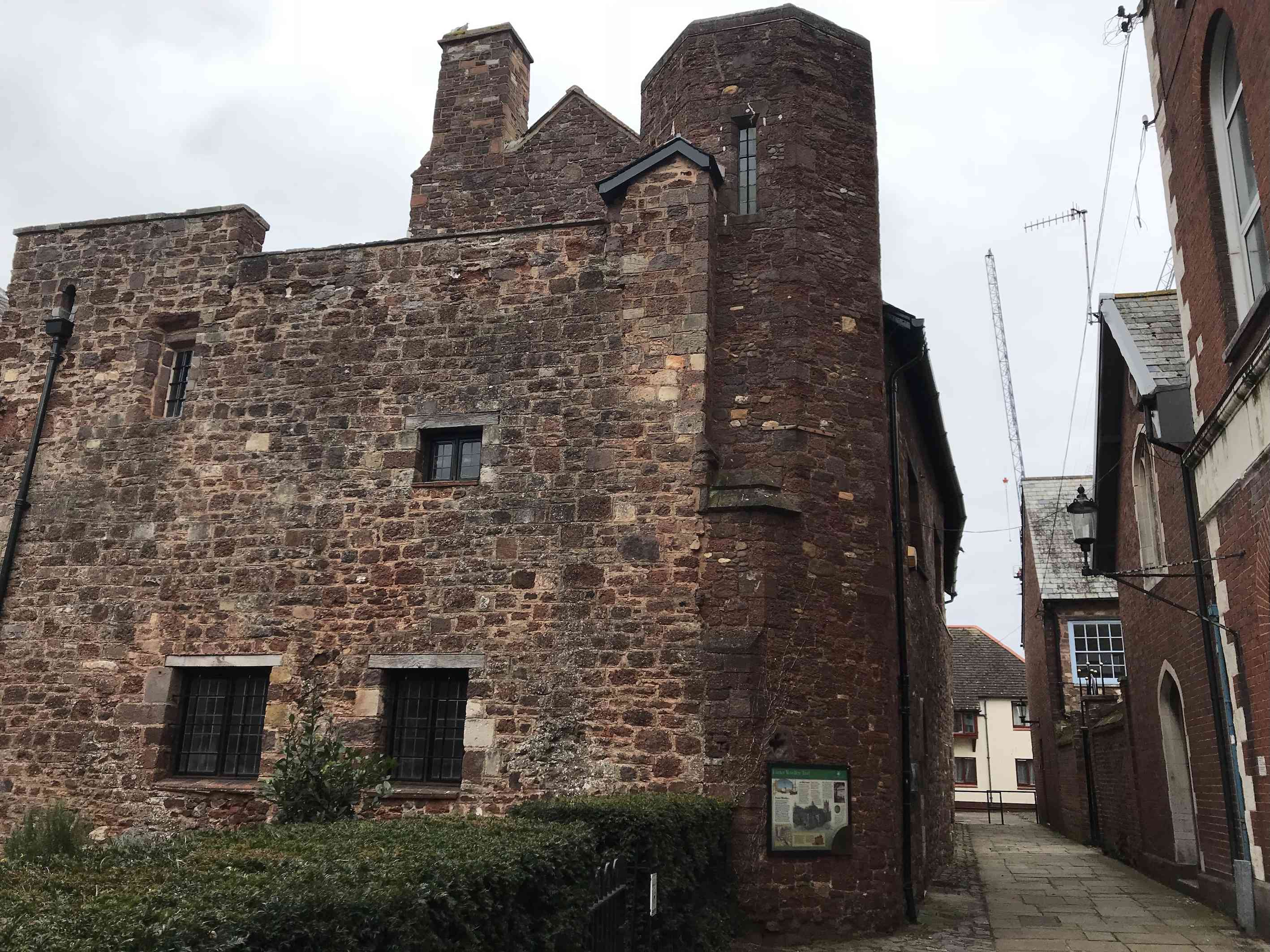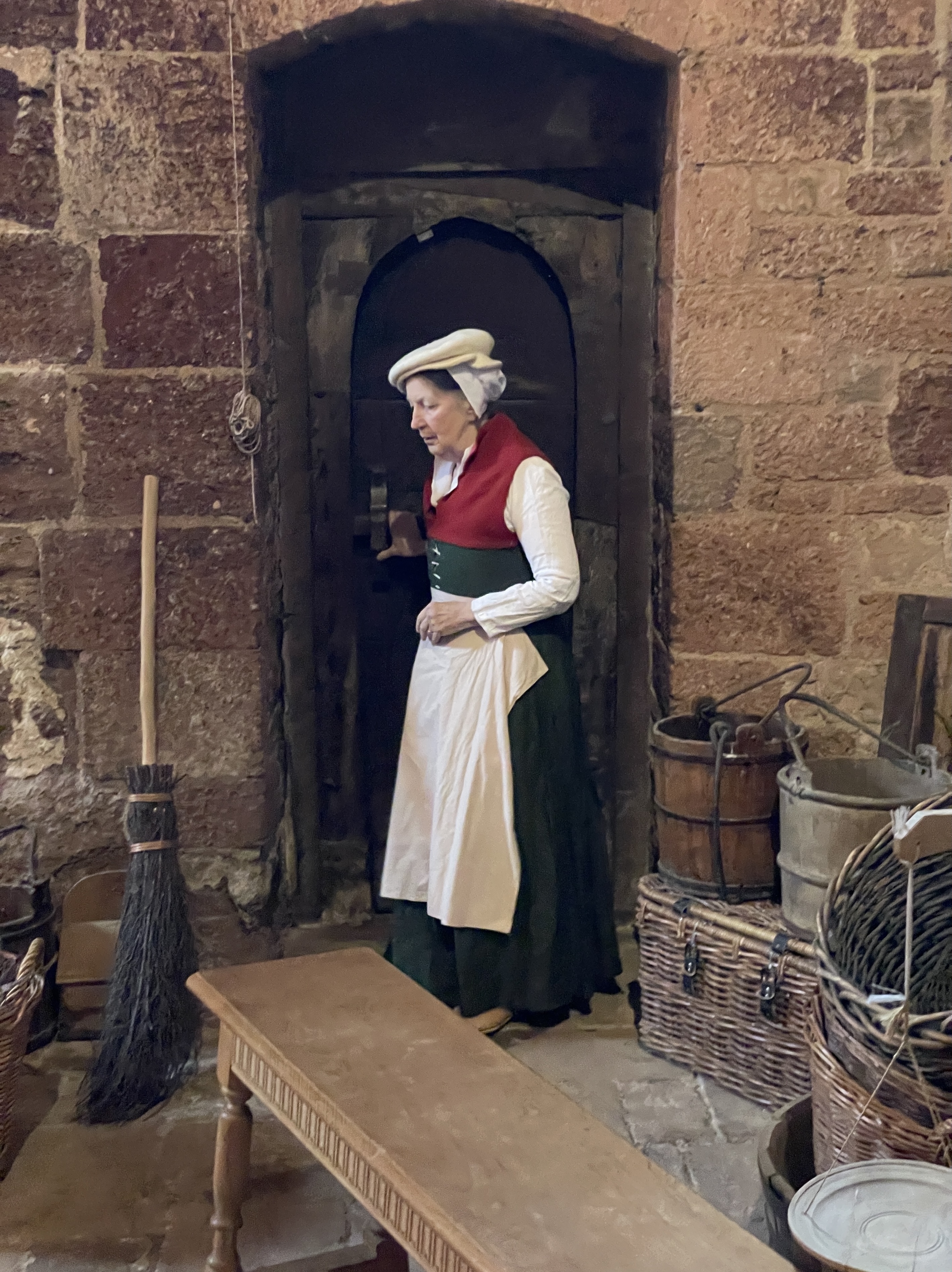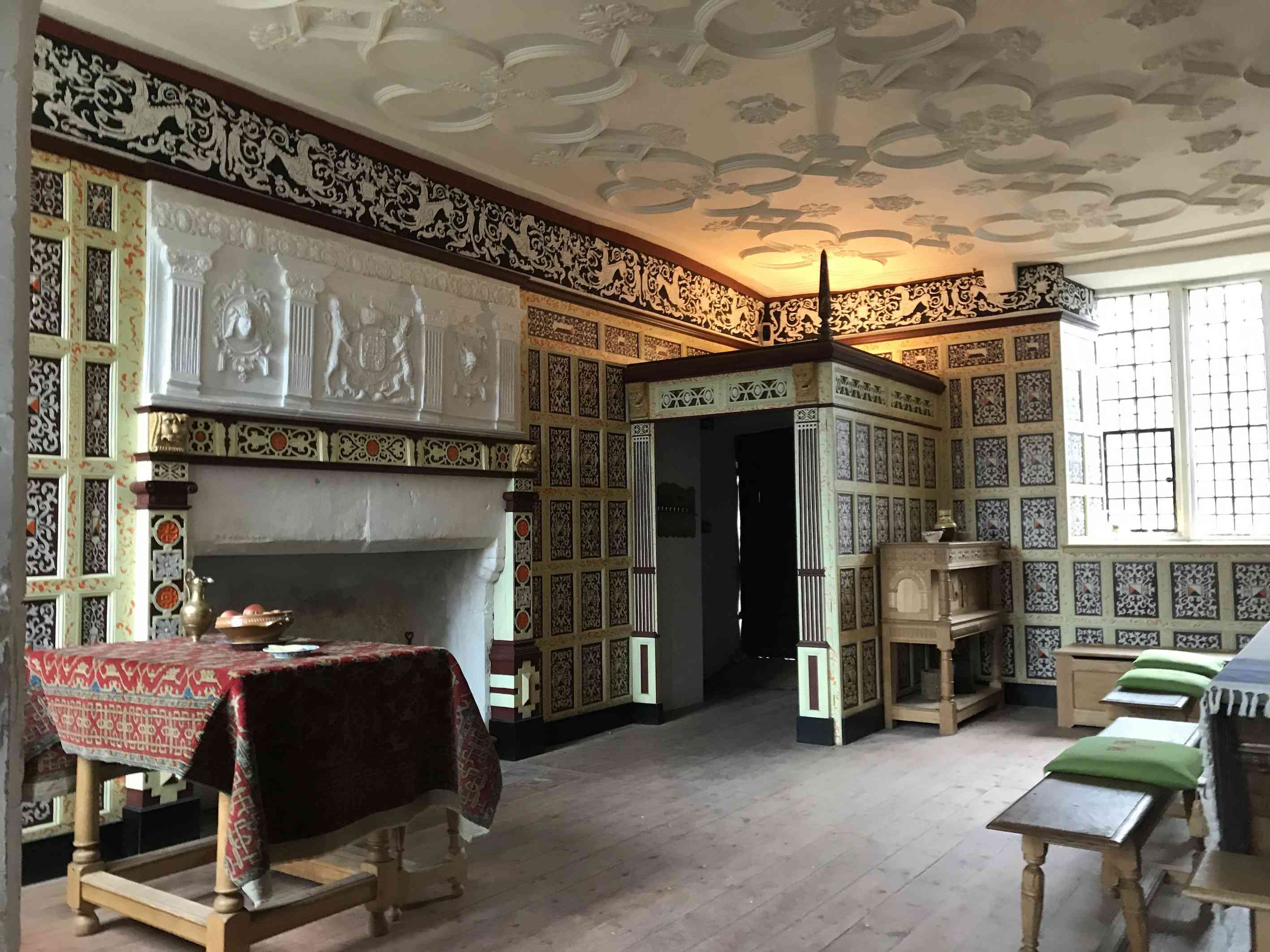
The Feisty Women of St Nicholas Priory, Exeter

St Nichoals Priory, one of Exeter's oldest buildings
If you turn away from the bustle of Fore Street in Exeter and take a stroll down a narrow path known as The Mint, you will come to St Nicholas Priory. Today it is a tranquil place, with shady gardens and ancient walls of red Heavitree stone. Had you walked that way on a summer’s day in 1536, you’d have been caught up in a commotion, with the voices of angry women splitting the air as they marched on the priory church that once stood opposite the buildings that remain today. The women of Exeter were determined to take on the men sent by Thomas Cromwell’s commissioners to take down their priory church.
Founded in the 11th century, St Nicholas Priory is among the oldest surviving medieval buildings in the city. In 1068, the newly crowned King William put down a rebellion led by a courageous woman named Gytha. She was the mother of Harold Godwinson, who William defeated at the Battle of Hastings. Gytha pleaded with William for the return of the body of her slain son, King Harold, but William refused. Gytha did not give up easily; she retreated to her lands in Exeter, where she instigated a rebellion, and William laid siege to the city. Eventually, his forces proved too strong. Exeter was Gytha’s last stand against the conquering Normans. She escaped — probably to Scandinavia — along with the wives or widows and families of a lot of other prominent Anglo-Saxons. William confiscated all of Gytha’s estates, including the church of St Olave’s at the top of Fore Street near Mary Arches Street. He gifted that part of Exeter to Battle Abbey. The abbey established a Benedictine priory there as a sister house.
For generations, the monks of St. Nicholas’ had been central to local life. Monasteries were much more than centres of religious worship. They provided hospitality to visitors, and gave aid, shelter, and care for the poor, sick, and elderly. Neither Henry VIII’s separation from the Church of Rome, nor Cromwell’s plans for seizing the wealth of priories and monasteries, went down well with the working people. The wealthy, however, lined up to gain from the distribution of lands.
As one of the smaller religious houses, St. Nicholas’ was among the first wave attracting Cromwell’s attention as he began selling off assets to swell the royal coffers. Commissioners, officials Cromwell sent to set his plans in motion, soon arrived in Exeter with St Nicholas in their sights. After surveying the property, they decided they could get a good price for the stone of the priory church. But first they would remove all the valuables and the trappings of the Church of Rome. They ordered a man to start work while they went off to have their dinner.
Elizabeth Glanfield would not allow them to proceed with the destruction without a fight. We know little about Elizabeth, but she must have been quite a character. Picking up the nearest weapon she could find — a shovel — Elizabeth got together a group of her friends — Jane Reeve, Agnes Collaton, Alice Miller, Joan Reed, and others.

That broom looks a handy weapon!
The enraged women descended on the church like a pack of she-wolves. They wielded brooms and pikes and staves — anything they could lay hands on, and finding the door locked, they broke it open. Inside they found the carpenter dismantling the rood screen, one of the most sacred parts of the church. The women went for the poor man with a will, beating him and hurling stones at him until he climbed up to the tower to escape them. Nothing daunted, the women climbed up after him. Eventually, fearing for his life, the man jumped. He only narrowly escaped death and ended up with a broken rib.
Alderman John Blackaller heard of the riot and rushed to the scene. He tried to talk the women round, but they turned on him and attacked him as well. Elizabeth Glanfield delivered a telling blow with her shovel and sent Blackaller on his way. The terrified alderman appealed to the mayor, William Hurst, who arrived bringing men with him to arrest the women.
When the commissioners heard the story, it seems they asked the mayor to be lenient with Elizabeth and her friends.
The local dignitaries appointed to enquire into the incident a few months later, found it hard to believe mere women were capable of such defiance. They said that the attackers must have been men in disguise. Clearly, they did not know the feisty women of Exeter.
Elizabeth and her friends escaped further punishment, but the workers returned and took down the church. Some stones were later used to repair the Exe Bridge. John Hooker, Exeter historian, writer, solicitor, antiquary, and civic administrator, who died in 1601, left us a colourful account of the events of the day the women of Exeter defied Cromwell’s henchmen.
In the late sixteenth century, Mayor Hurst’s grandson bought the remaining priory buildings and converted them into a fashionable Elizabethan town house.

The Priory is now in the care of the Exeter Historic Building Trust. Visit their website St Nicholas Priory to find out more and for opening times and events.